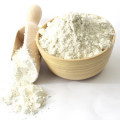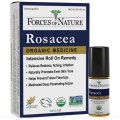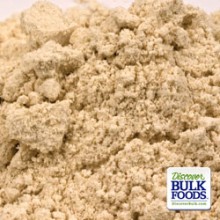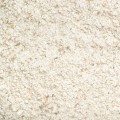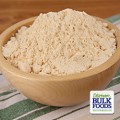 Loading... Please wait...
Loading... Please wait...- Home
- About Us
- Shipping, Returns & FAQ's
- Contact Us
-
For Your Information
- Canadian Customers Have a Choice if Shipping Via UPS
- Aura Cacia Homemade Aromatherapy Recipes
- Bella Nella Altered Art & Paper Crafts Blog
- Forms of Herbal Preparations
- Laundry Tips To Conserve Energy Blog from The Laundress
- The Story of Frontier Natural Products Co-Op
- Sovereign Silver Hydrosol and Aloe Protocol Stops Downward Spiral of Gut Dysbiosis
- Disclaimers
- Recommended Links
- RSS/Recent News
- The Story of Typhoon Housewares
- Reviews/Testimonials
- Raw Ingredients for Mfg
- Home
- Grocery
- Flour/Grains
- Oat Whole Flour Bulk
Oat Whole Flour Bulk
Product Description
Whole oat (avena sativa) flour is created by grinding kilned groats with the bran layers fully intact. This oat flour is an excellent source of whole grains and can be used in many baking recipes and skin issues.
Oat flour is a flour which is made from ground oats. This flour can be used in a wide variety of recipes, although it does carry a caution, as it does not behave like wheat flour, since it contains no gluten. As a result, if oat flour is used alone, baked goods will not rise or hold together; oat flour must be mixed with other flours in baking, whether you are attempting gluten free baking or just wanting to spice up conventional recipes. Most markets carry oat flour, and it can also be made at home if you have a good spice mill or food processor.
Oats are a cereal grain which has been cultivated for thousands of years. Archaeological evidence shows that people have been eating oats in a variety of recipes for quite a long time, but that oats were especially popular in gruels, made by cooking oats for an extended period of time to soften them. Over time, other uses for oats developed; one of the most well known is oatmeal, a modern form of prehistoric gruels which is widely eaten in many regions of the world. Oats are high in fiber and an assortment of useful dietary minerals, making them an excellent addition to the diet.
To make oat flour, oats are finely ground to create a powder, in the same way that other grains are processed into flour. Typically, whole oats are used, so the resulting flour retains the nutritional value of the oats. Oat flour can be added to an assortment of recipes, replacing part of the flour which the recipe calls for, and it adds a rich, nutty flavor and a dense texture to baked goods. Some people like using it in breads, and it can also be added to baked sweets and muffins for a more chewy texture.
Many people use oat flour in gluten-free baking. It is important to remember that oat flour is often processed in facilities which handle gluten-containing grains, like wheat. As a result, it can be contaminated with gluten, and people who are extremely sensitive to gluten may experience discomfort if they consume products made with the contaminated oat flour. It is a good idea to purchase oat flour which is labeled as gluten free if this is a concern.
Oats can go rancid, and as a result they are usually cooked before processing to make them more shelf stable. In the case of oat flour, it is a good idea to use flour which is as fresh as possible. You can store it in an airtight container in a cool, dry place, or you can freeze it to extend the shelf life; frozen oat flour is very easy to use, and it will be less likely to go bad if you only use a small amount of oat flour at a time.
Many cultures traditionally use oatmeal to soothe irritated skin. Herbalists have long recommended oats for a number of skin conditions. Oat flour may help to soften and moisturize your skin, reducing the appearance of wrinkles. You can also use oat flour to minimize scarring from acne or chicken pox. Oat flour helps to relieve itching associated with poison ivy or mosquito bites. Generally, oats act as an anti-inflammatory and prevent itching when applied topically.
Research has validated claims that oats have potential skin benefits. A 2008 study published in the “Archives of Dermatological Research” examined oats to discover if oats do help the skin. Researchers found that the phytochemicals and avenanthramides in oats reduced inflammation and scratching in a murine itch model. Researchers concluded that oats contain active ingredients that soothe the skin by reducing irritants. A 2010 review in the “Journal of Drugs in Dermatology” stated that oats are effective in treating psoriasis, dermatitis and rashes.
Oat flour in the form of a paste can treat your skin when applied topically. Combine oat flour and hot water to form a paste. You can use as much water as you like depending on what type of consistency you would like for the paste. Leave the paste on for a few minutes and then rinse it off. You can use this as a daily moisturizing treatment. This paste also works for rashes, insect bites or other acute skin problems. You can also add oat flour to your bath for an all-over moisturizer or for itch relief.
Mask
You can use oat flour to make a beauty mask. Mix 2 tablespoons of oat flour in 2 tablespoons of hot water and ½ tablespoon of honey. Add a drop of lemon juice or sprinkle of cinnamon to the mixture. Allow the mixture to sit for five to ten minutes before you apply to your face. Rinse your face with warm water and apply the mask while your skin is still damp. Leave the mask on for 10 minutes and rinse completely.
Oat Flour Recipes
Reference
wisegeek.com
livestrong.com
You Recently Viewed...
Currency Converter
Choose a currency below to display product prices in the selected currency.




